Discovering Nature’s Art: When the Wild Meets the World Made by Humankind
Humans have always been creators, building monuments and structures that reflect our ingenuity and ambition. Yet, there’s something magical that happens when nature steps in, adding its own touch to these man-made creations. Imagine the Eiffel Tower kissed by a fiery sunset or the Great Pyramid of Giza framed by the shifting desert sands. Nature doesn’t just decorate; it transforms, enhancing the beauty and adding layers of intrigue. These are the places where human endeavor meets the untamed artistry of the natural world.
1. Fly Geyser, USA
The Fly Geyser, located in Washoe County, Nevada, is a vibrant testament to accidental beauty. In 1916, locals drilling for irrigation inadvertently created a small geyser. After a geothermal power company drilled a test well decades later, scalding water found a weak spot, erupting five feet into the air. Today, calcium carbonate deposits have formed three travertine cones, each spewing its own geyser. Thermophilic algae paint the formations with brilliant colors, while geologists are baffled by the geyser’s rapid quartz growth, a process that typically takes 10,000 years.
2. Ussuri Bay, Russia
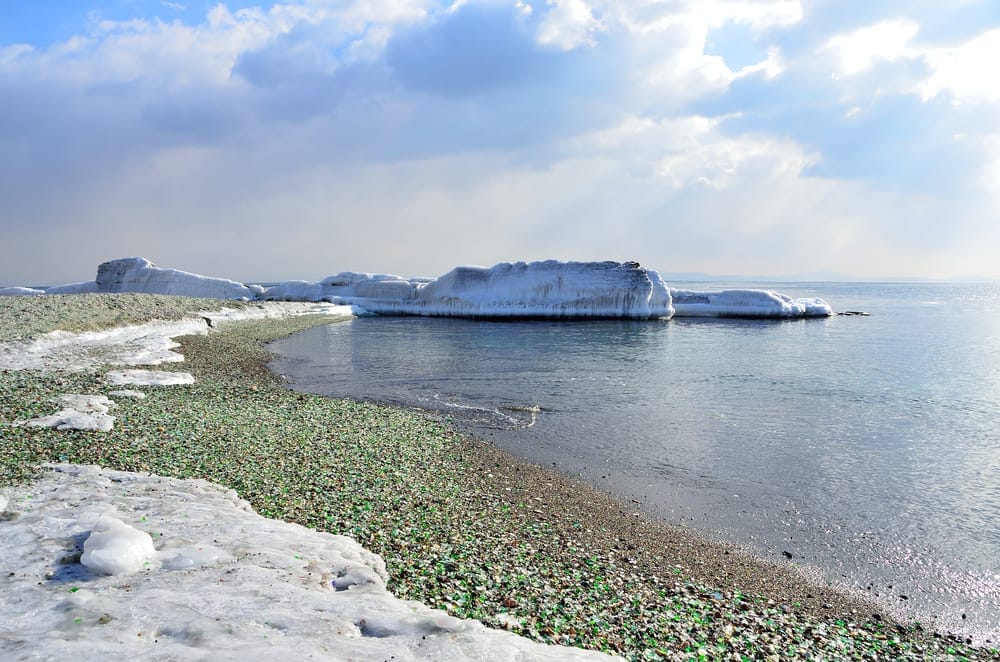
Once a dumping ground for a porcelain factory during the Soviet era, Ussuri Bay in Russia has undergone an incredible transformation. Discarded wine, beer, and vodka bottles were smoothed by the tide into a kaleidoscope of glass pebbles, drawing tourists worldwide. The black volcanic sand and frequent snow create a striking contrast with the glittering glass. However, this captivating beach is ephemeral; experts estimate that souvenir collectors and erosion will eventually claim these glass jewels within 20 years.
3. Tunnel of Love, Ukraine
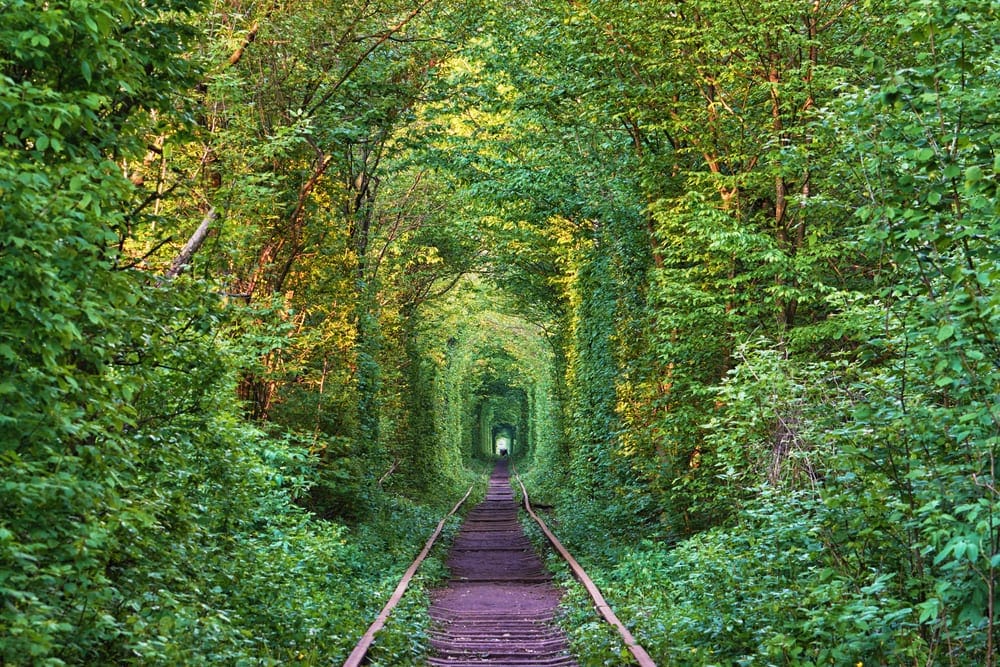
In the small Ukrainian town of Klevan, a railway track connecting it to Orzhiv has become an international sensation. Known as the “Tunnel of Love,” this natural tree tunnel gained fame through social media and a Japanese film. Created during the Cold War when the military planted trees to conceal rail movements, the thick foliage is trimmed by passing trains, forming a picturesque tunnel. Couples now visit from around the world to plant flowers and propose, believing that walking the tunnel hand-in-hand brings good luck.
4. Honghe Hani Rice Terraces, China
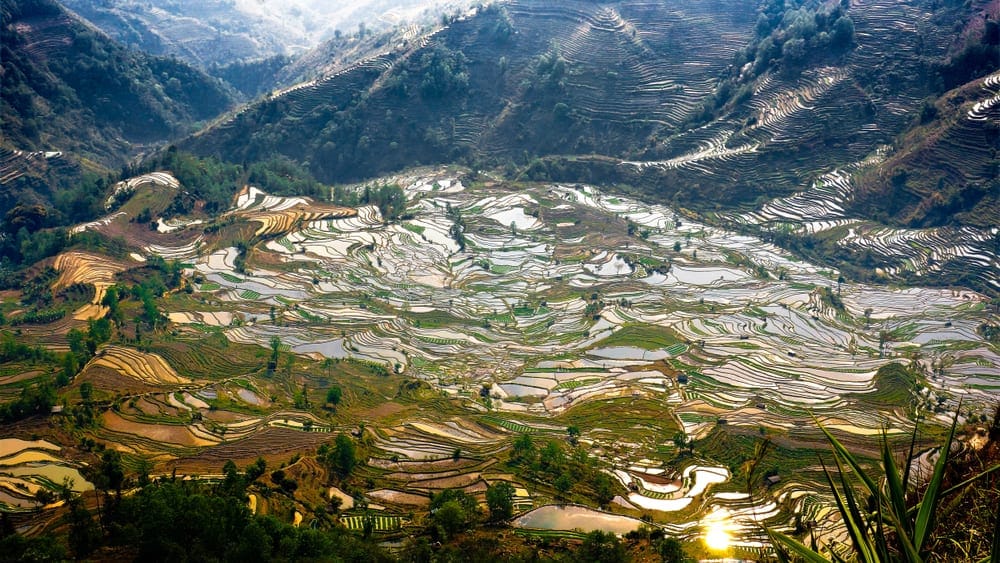
The Honghe Hani Rice Terraces, built over 1,300 years ago, cascade down the Ailao Mountains, showcasing the harmonious blend of human effort and nature’s canvas. Terraced steps, numbering around 3,000 in some areas, capture rainwater for growing red rice. The varied pool shapes create stunning reflections of the sky. Facing abandonment due to a lack of interest from younger generations, renewed interest and UNESCO World Heritage status in 2013 have revitalized these ancient terraces.
5. Post-bushfire Australia
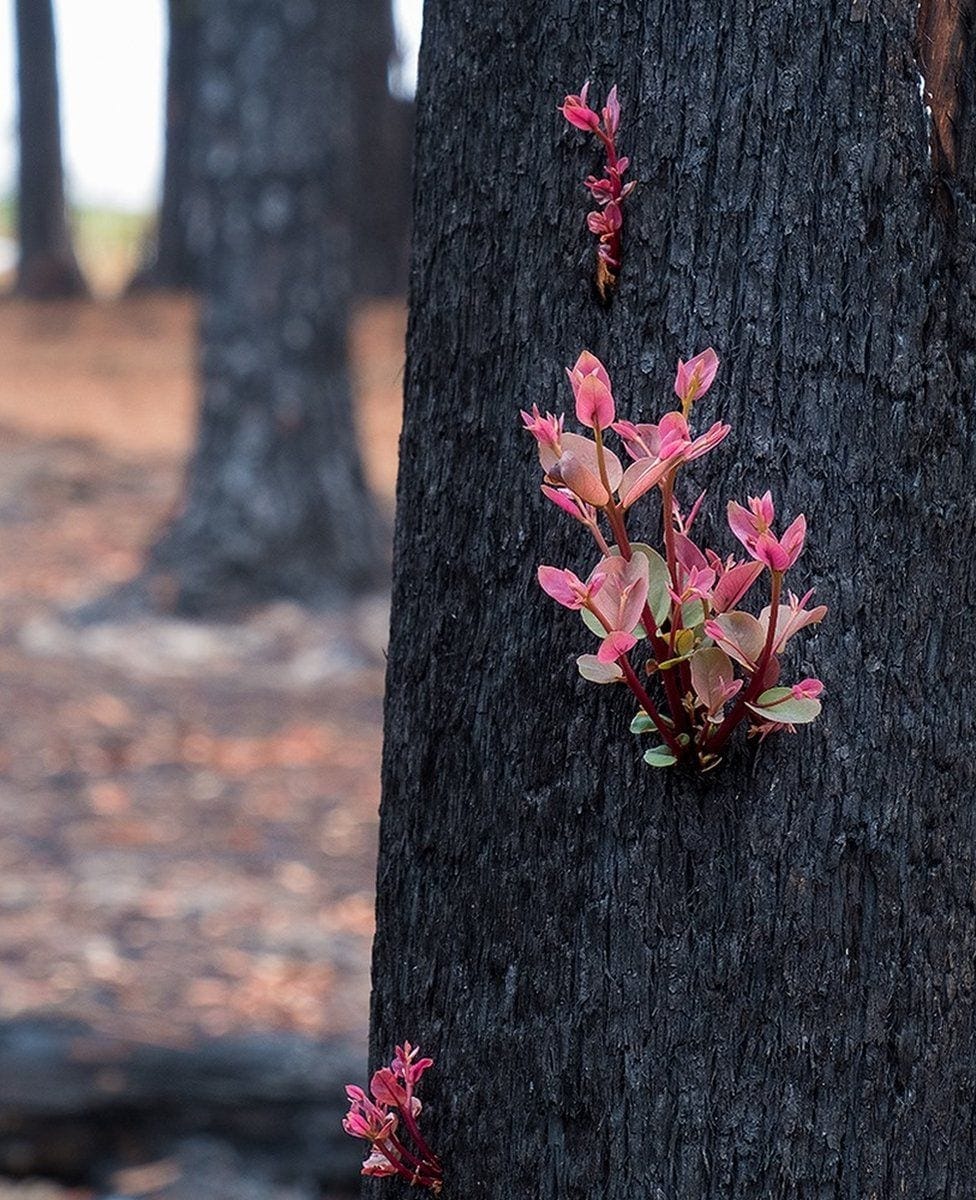
The devastating Australian bushfires of 2019 and 2020, whether sparked by deliberate actions or accidental causes, ravaged 42 million acres and led to the loss of billions of animals. But amidst the destruction, nature’s resilience shone through. Following the rains of 2020, flowers and plants burst into life, brightening the blackened landscape. Species triggered by heat or smoke, like the Banksia, released seeds, while others, like the Christmas Bell wildflower, thrived as their competition was eliminated.
6. Abraham Lake, Canada
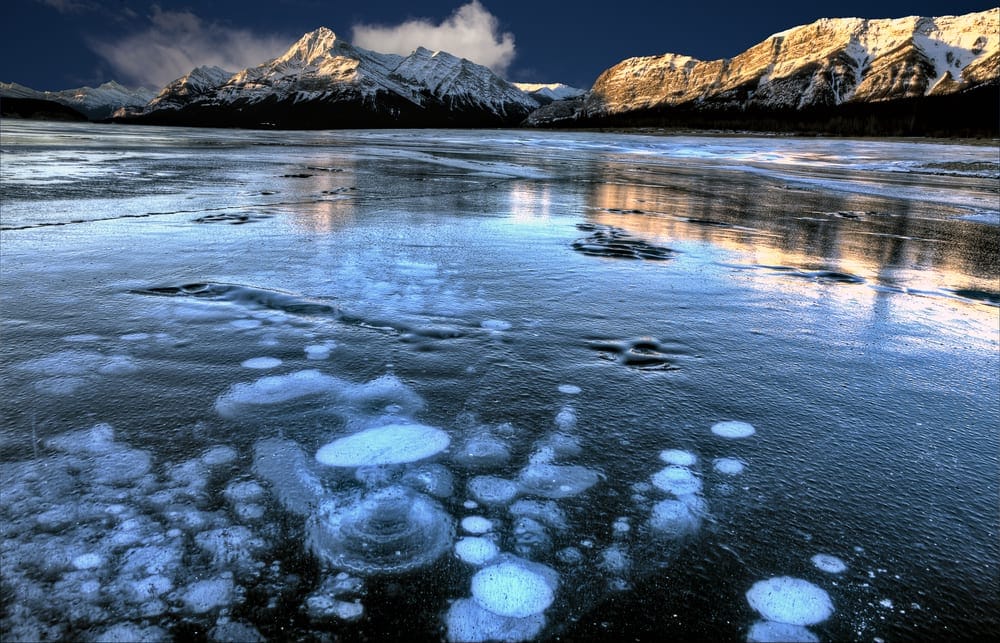
Abraham Lake, an artificial reservoir in the Canadian Rockies, was formed in 1972. Its turquoise color comes from glacial flour suspended in the water. However, the lake is best known for its stacked methane bubbles, a byproduct of decomposing plants and animals. As the lake is relatively young, the high amount of organic matter produces substantial methane, which freezes into mesmerizing patterns. Experts are concerned about the methane’s impact, as it is a potent greenhouse gas.
7. Sreebari Shiva Temple, Bangladesh
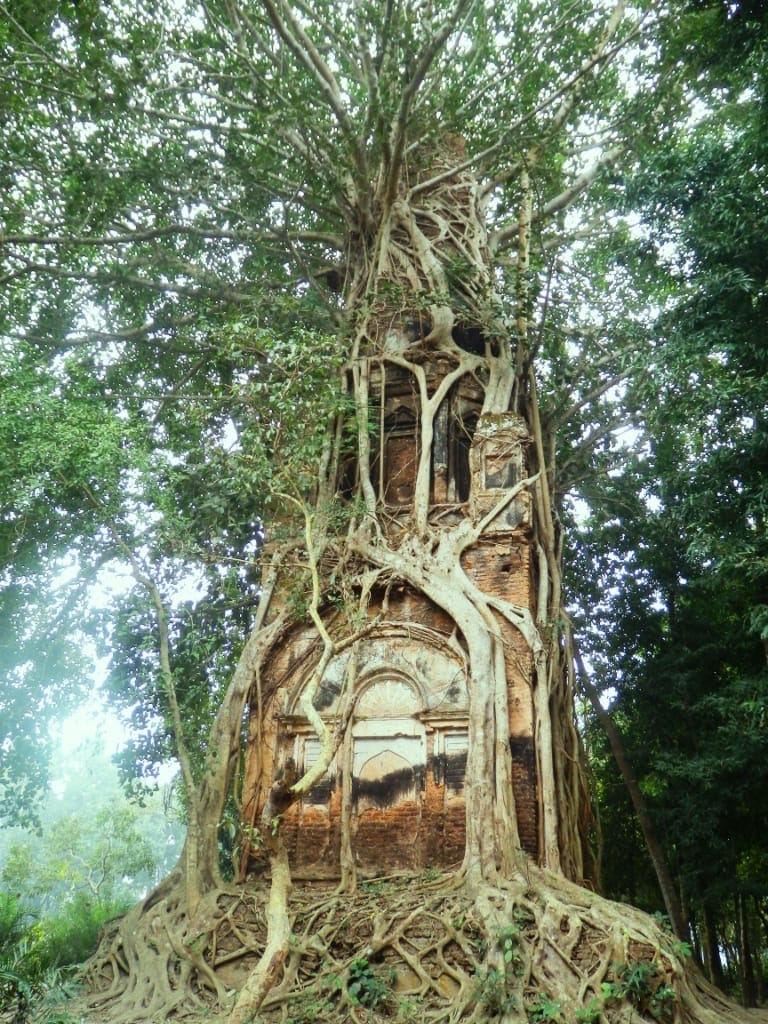
Outside the village of Sreebari stands an abandoned Hindu temple dedicated to Shiva, embraced by a giant sacred fig tree (Ficus Religiosi). Considered sacred in both Hinduism and Buddhism, Ficus Religiosi trees are often meditated under. The temple, built by a local landowner about 175 years ago, is considered haunted by locals. Now cleared of the surrounding jungle, the temple stands as a striking example of nature reclaiming man-made structures.
8. Chuuk Lagoon, Federated States of Micronesia
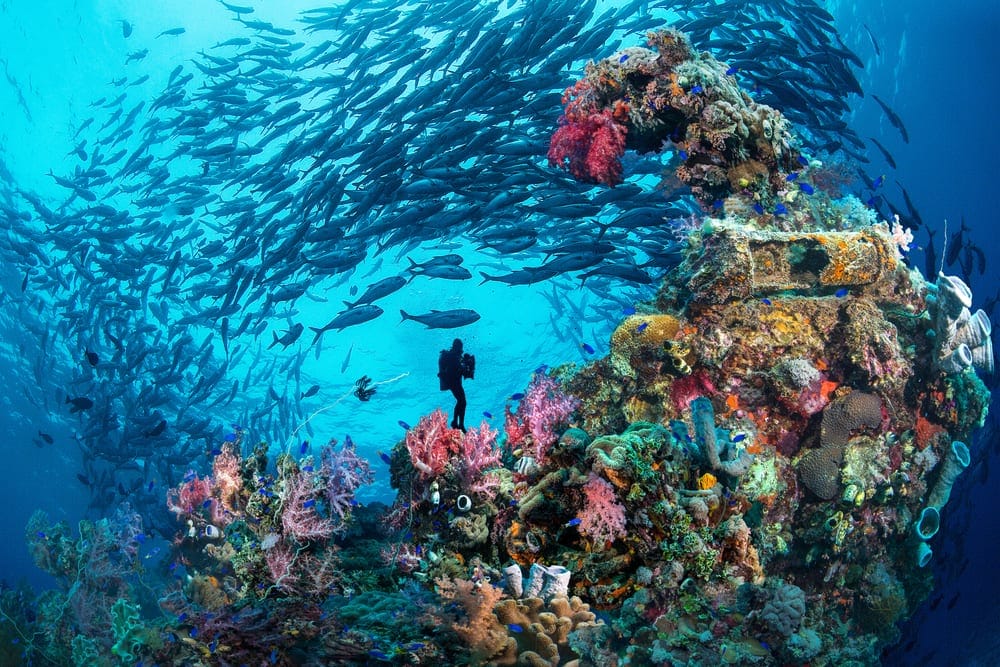
Chuuk Lagoon, once known as Truk Atoll, was a strategic Japanese stronghold during World War II. Fortified with troops, airfields, and coastal defenses, it became a primary anchorage. American forces bypassed a land invasion, opting instead for aerial attacks that sank over 60 Japanese ships. Today, these wrecks teem with marine life, including corals, sharks, and vibrant fish, making it a world-renowned wreck diver’s paradise.
9. St. Joseph North Pier Lighthouses, USA
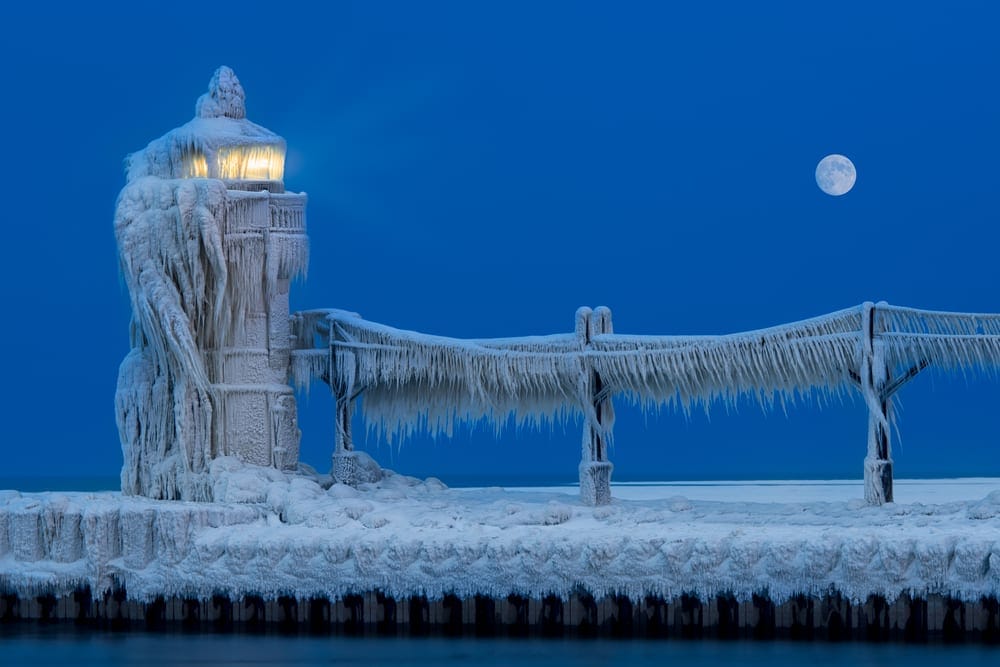
The St. Joseph North Pier Lighthouses on Lake Michigan frequently transform into stunning ice sculptures during winter. The outer lighthouse, built in 1906, and the inner lighthouse, built a year later, are connected by a 300-yard catwalk. The beauty is ephemeral, with internet photos capturing different formations each year. These icy adornments offer a mesmerizing glimpse of nature’s artistic touch.
10. Cold Water Geysers of Analavory, Madagascar
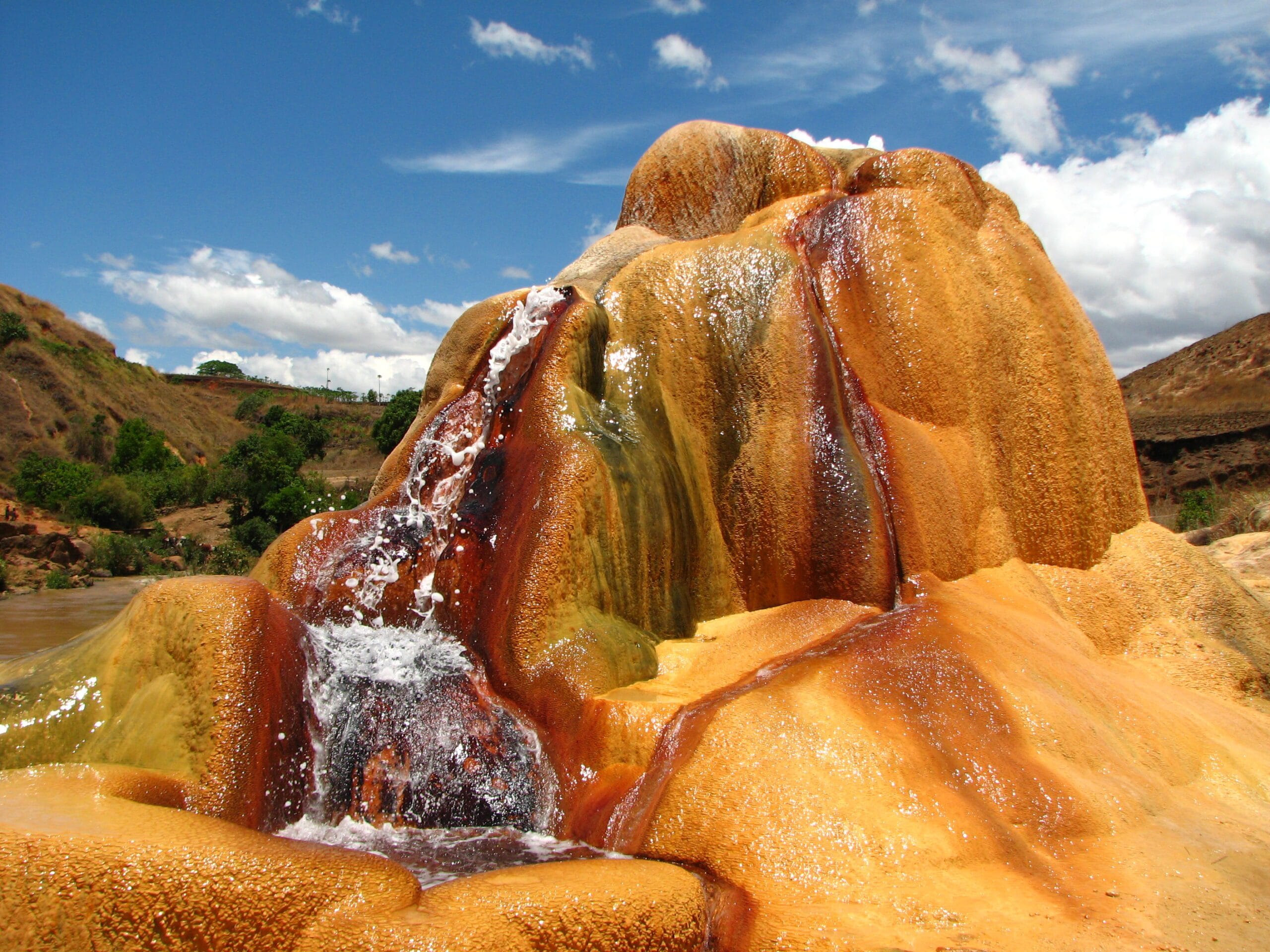
Near Analavory, Madagascar, unique “cold” geysers spout water saturated with carbon dioxide. Originating from argonite mines, the water travels through iron pipes, dissolving lime and metal. The carbonated water fizzes upon reaching the surface, forming travertine mounds. Despite being called cold, the water is warm enough for people to play in, though the carbonic acid content is a surprise. These formations are a testament to the natural processes interacting with man-made systems.
+ Morning Glory Pool, USA
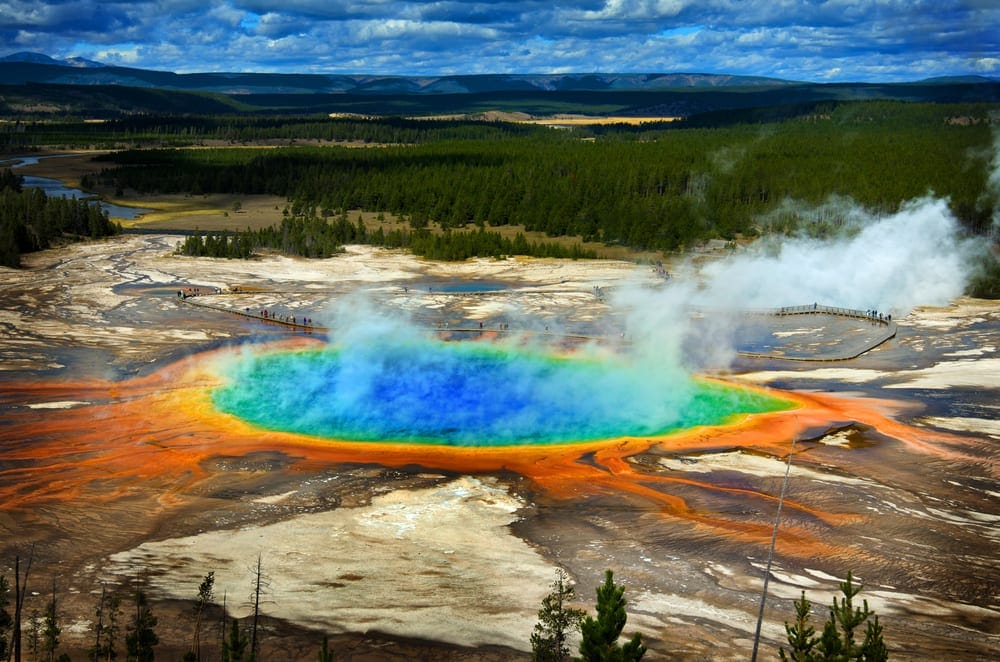
The Morning Glory Pool in Yellowstone National Park serves as a cautionary tale. Originally a deep blue due to thermophilic bacteria, the pool’s color changed after visitors threw coins and trash into it, clogging the thermal heat source. As the water cooled, different colored microorganisms invaded, creating concentric circles of yellows, greens, and reds. Clean-up efforts have failed to restore its original hue, highlighting how human actions can alter natural wonders for the worse.
Conclusion
From accidental geysers to reclaimed industrial sites and transformed war relics, nature has a remarkable ability to enhance and alter the human-made world. These examples show how the unexpected collaboration between nature and human structures can result in breathtaking beauty and ecological significance. Sometimes, the most stunning creations arise when we least expect it, proving that nature is the ultimate artist.
Share your favorite nature-decorated places in the comments below!










